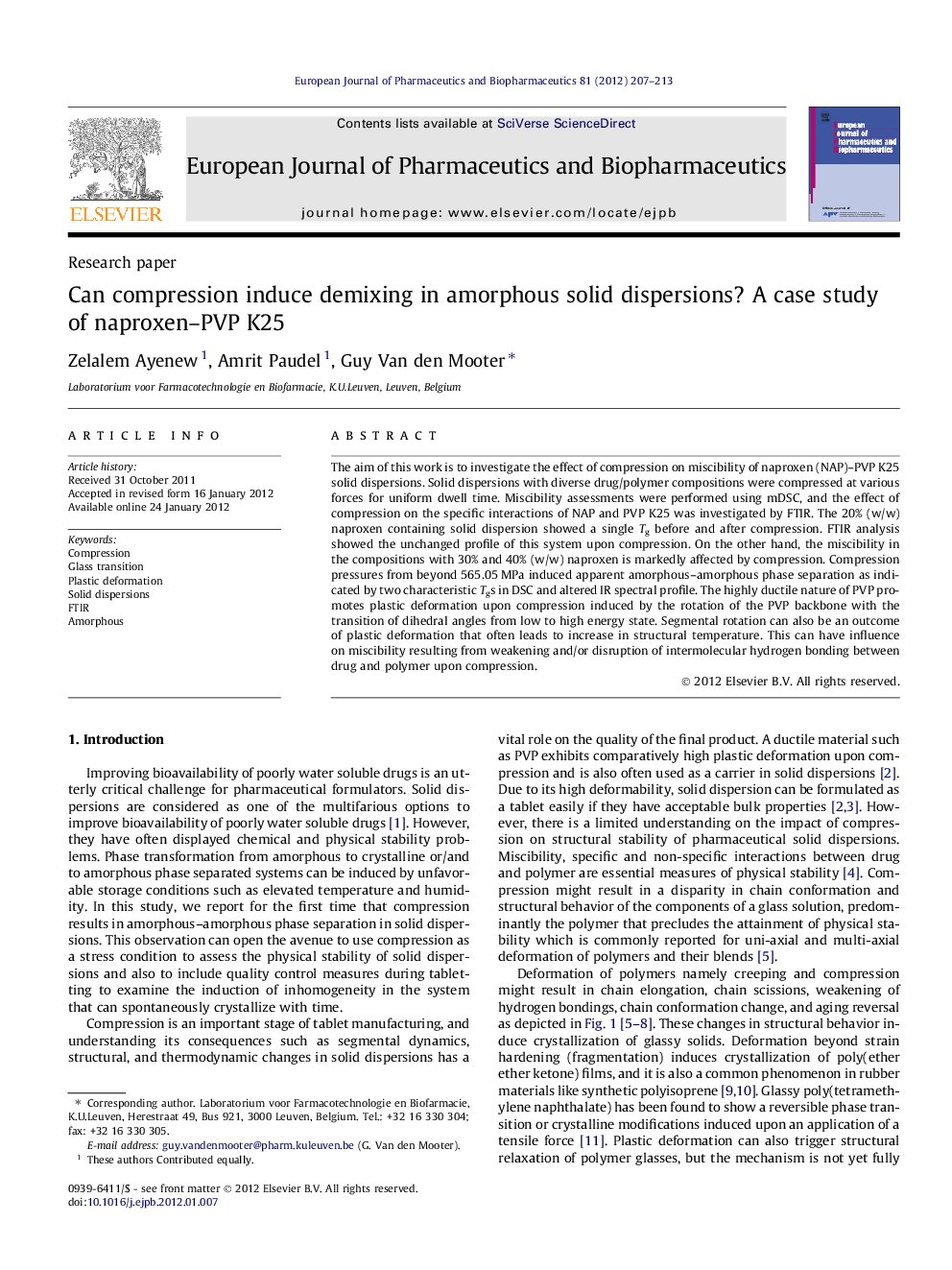| Article ID | Journal | Published Year | Pages | File Type |
|---|---|---|---|---|
| 2083780 | European Journal of Pharmaceutics and Biopharmaceutics | 2012 | 7 Pages |
The aim of this work is to investigate the effect of compression on miscibility of naproxen (NAP)–PVP K25 solid dispersions. Solid dispersions with diverse drug/polymer compositions were compressed at various forces for uniform dwell time. Miscibility assessments were performed using mDSC, and the effect of compression on the specific interactions of NAP and PVP K25 was investigated by FTIR. The 20% (w/w) naproxen containing solid dispersion showed a single Tg before and after compression. FTIR analysis showed the unchanged profile of this system upon compression. On the other hand, the miscibility in the compositions with 30% and 40% (w/w) naproxen is markedly affected by compression. Compression pressures from beyond 565.05 MPa induced apparent amorphous–amorphous phase separation as indicated by two characteristic Tgs in DSC and altered IR spectral profile. The highly ductile nature of PVP promotes plastic deformation upon compression induced by the rotation of the PVP backbone with the transition of dihedral angles from low to high energy state. Segmental rotation can also be an outcome of plastic deformation that often leads to increase in structural temperature. This can have influence on miscibility resulting from weakening and/or disruption of intermolecular hydrogen bonding between drug and polymer upon compression.
Graphical abstractThe present work showed that compression of metastable solid dispersions resulted in demixing to polymer-rich and drug-rich regions. However, stable solid dispersions remained physically intact and homogeneous after compression.Figure optionsDownload full-size imageDownload high-quality image (93 K)Download as PowerPoint slide
